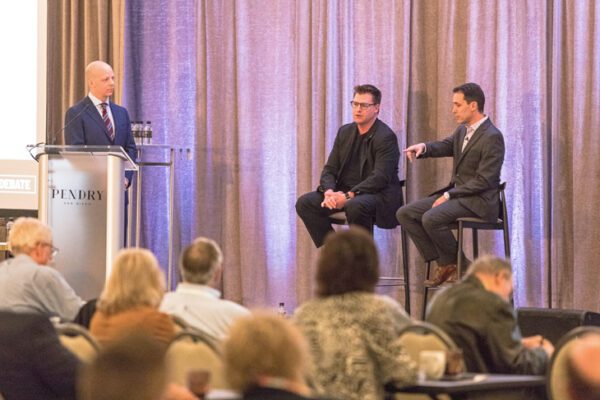Warren Buffett’s Investment Model: Insider Trading Reveals Undervalued Stocks
Almost four months ago, Warren Buffett famously wrote his endorsement of U.S. equities in his op-ed piece to The New York Times entitled “Buy American, I Am.”
Warren Buffett’s investment model and purchase criteria are unbearably fuzzy to analysts since they can’t just go punch numbers from their database – no matter how big or expensive it is.
Don’t let anybody fool you into believing that value investing is based on any kind of ratio analysis, or that looking at one simple financial figure accurately defines an “undervalued” company. It’s just not that simple.
But there are better ways to determine when it’s the right time to buy. We’re going to show you what makes Warren Buffett’s investment model so difficult and hard to master. And you’ll get the secrets to leapfrogging that process: Finding out – very quickly – whether a company is undervalued or not.
Warren Buffett’s Investment Model
When asked about his investment model, Warren Buffett stated in the article, “A simple rule dictates my buying: Be fearful when others are greedy, and be greedy when others are fearful. And most certainly, fear is now widespread, gripping even seasoned investors.”
But just because he’s greedy now, doesn’t mean he loses sight of the fundamentals.
- First, he assesses the certainty with which the long-term economic characteristics of the business can be evaluated. Is it a solid business model that isn’t likely to go broke based on its (and the industry’s) economics?
- Second, he considers the conviction with which he can evaluate management as to its ability to realize the full potential of the business to the shareholders. He makes sure that the top executives running the business aren’t dirt bags – they’re competent and honest.
- Third, he carefully evaluates the certainty with which management can be counted on to channel the reward from the business to the shareholders rather than to itself. Can management maximize his return?
- Fourth, he gauges the political-environment in terms of the levels of taxation and inflation that will be experienced. He knows that this will determine the degree to which an investor’s purchasing power is reduced from his gross return.
- Finally, he looks hard at the purchase price of the business. He loves buying stock when the share price is dirt cheap – the cheaper the better.
That’s exactly how he’s posted stellar returns for so many decades. He assesses his risk in regards to his after-tax returns. Will an investment give him at least as much purchasing power as at the beginning of an investment, plus a modest rate of return on the principle – as compared to some minimum acceptable interest rate if the money had been loaned?
These are just a few of the factors Warren Buffett evaluates within his investment model before buying into a business. And when you consider that he’s been at this for over 40 years, it gets a little daunting for investors looking to follow.
A Simple Way to Shop For Undervalued Stocks
However, there is a simple way any investor can shop for undervalued stocks – without knowing every miniscule detail about its business.
Who would you trust to give you the best appraisal for how well a business was doing – the general manager or an analyst who stops in once a year for a “factory tour and free dinner?” After a pat on the back from the CEO, the analyst schleps back to his office to run a few “snapshot” producing canned programs using stale reports of quarterly and annual performance measures meeting minimal SEC reporting requirements.
The general manager of course, is going to know a great deal more about the business than the analyst. The analyst may have a good idea of the business workings and how it’s doing when they walk in. However, they really only have a snapshot of that moment, even though Wall Street touts the analyst as an “expert.”
Ultimately, these “experts” aren’t seeing the day-to-day operations, the up days and the down days.
But the insiders do…
- They know more about a company’s inner workings than almost anyone.
- They know if a product’s a dud, or if it’s a goldmine.
- They can tell if the stock is undervalued, or if it’s filled with air.
- They know when business is booming or busted. Quite simply, they are the best barometers you’ll ever get on a company’s true health.
When insiders in a business you know is solid are quietly buying in hordes, especially lower executives, it couldn’t be a better vote – of confidence. And that’s not the best part.
These company insiders have to tell us when they purchase or sell stock.
When inside executives buy or sell in the open market they have to file special forms with the SEC. These forms enable us to track insider trading – and it gives us a big leg up on discovering the true value in any company.
It all starts with proper education,
Scott Brown
[adzerk-get-ad zone="245143" size="4"]





